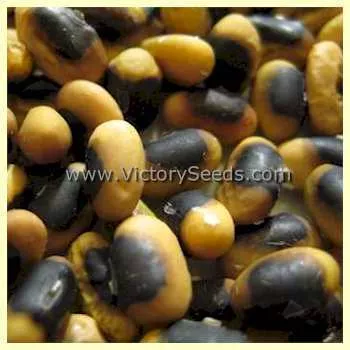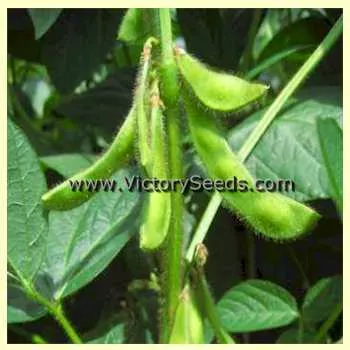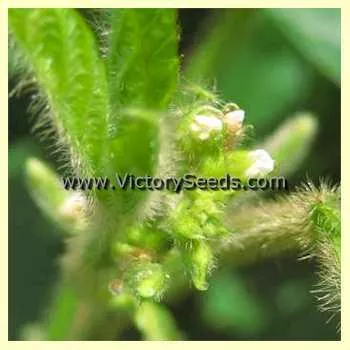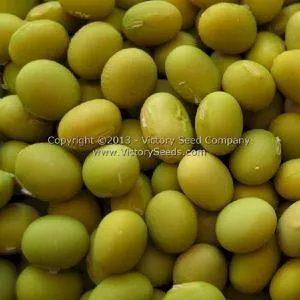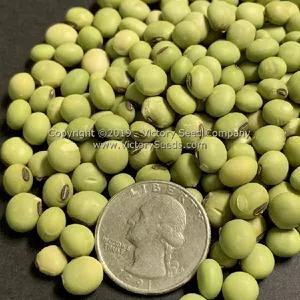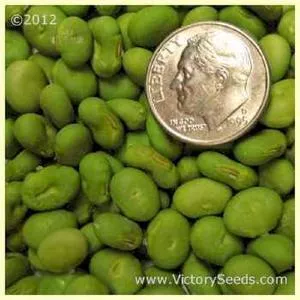


Black Eyebrow Soybean
Glycine max
Price: $3.95
SKU: 3301021120 days, indeterminate - The plants grow from twenty five to forty inches and have white flowers. The pods contain two to four, medium-sized, brown colored seeds with black saddles around the hilums (eyes). According to USDA tests, they contain 43% protein and 19% oil.
There are three accessions in the USDA GRIN with all originating in China. PI 30744 was collected in 1911 in Liaoning, China and called 'Hei Mei Tou', which literally means "black eyebrow soybean" in Chinese. PI 548308 is reportedly developed from PO 30744 and PI 438486, also originating in China, came to the USDA from the N.I. Vavilov Institute of Plant Industry (USSR), whose accession number is VIR 63, in 1979.
There are three accessions in the USDA GRIN with all originating in China. PI 30744 was collected in 1911 in Liaoning, China and called 'Hei Mei Tou', which literally means "black eyebrow soybean" in Chinese. PI 548308 is reportedly developed from PO 30744 and PI 438486, also originating in China, came to the USDA from the N.I. Vavilov Institute of Plant Industry (USSR), whose accession number is VIR 63, in 1979.
Genetic Classification: Open Pollinated
Planting Instructions:
Soybeans are a tender plant and should be sown after all danger of frost has passed and the soil has warmed. Planting them at about the same time as corn is a good rule.
Sow seeds about one inch deep, three to four inches apart. Although you can plant in rows, they can be planted densely and allowed to form a canopy. This will help control weed growth. Soybeans are tolerant of drought and poor soil since they fix nitrogen. They will, however, benefit from fertile soil.
Soybean flowers are perfect (self-fertile) and cross pollination is almost non-existent, making saving seed easy. Allow pods to fully develop and dry on the plants.
Sow seeds about one inch deep, three to four inches apart. Although you can plant in rows, they can be planted densely and allowed to form a canopy. This will help control weed growth. Soybeans are tolerant of drought and poor soil since they fix nitrogen. They will, however, benefit from fertile soil.
Soybean flowers are perfect (self-fertile) and cross pollination is almost non-existent, making saving seed easy. Allow pods to fully develop and dry on the plants.
Customer Reviews:
Do you have experience with this one? 📝 📣 Write a review!
No reviews have been posted yet.

